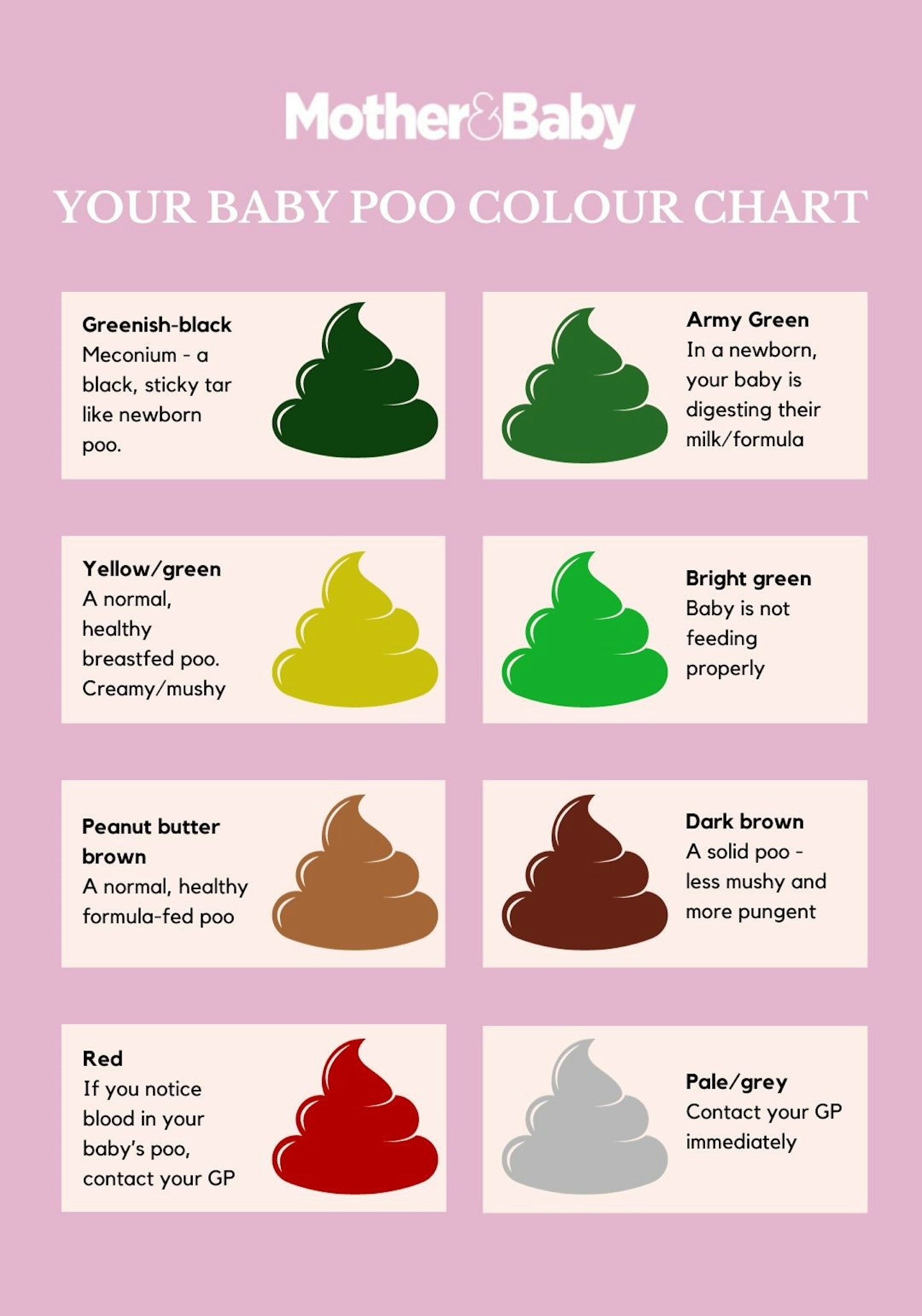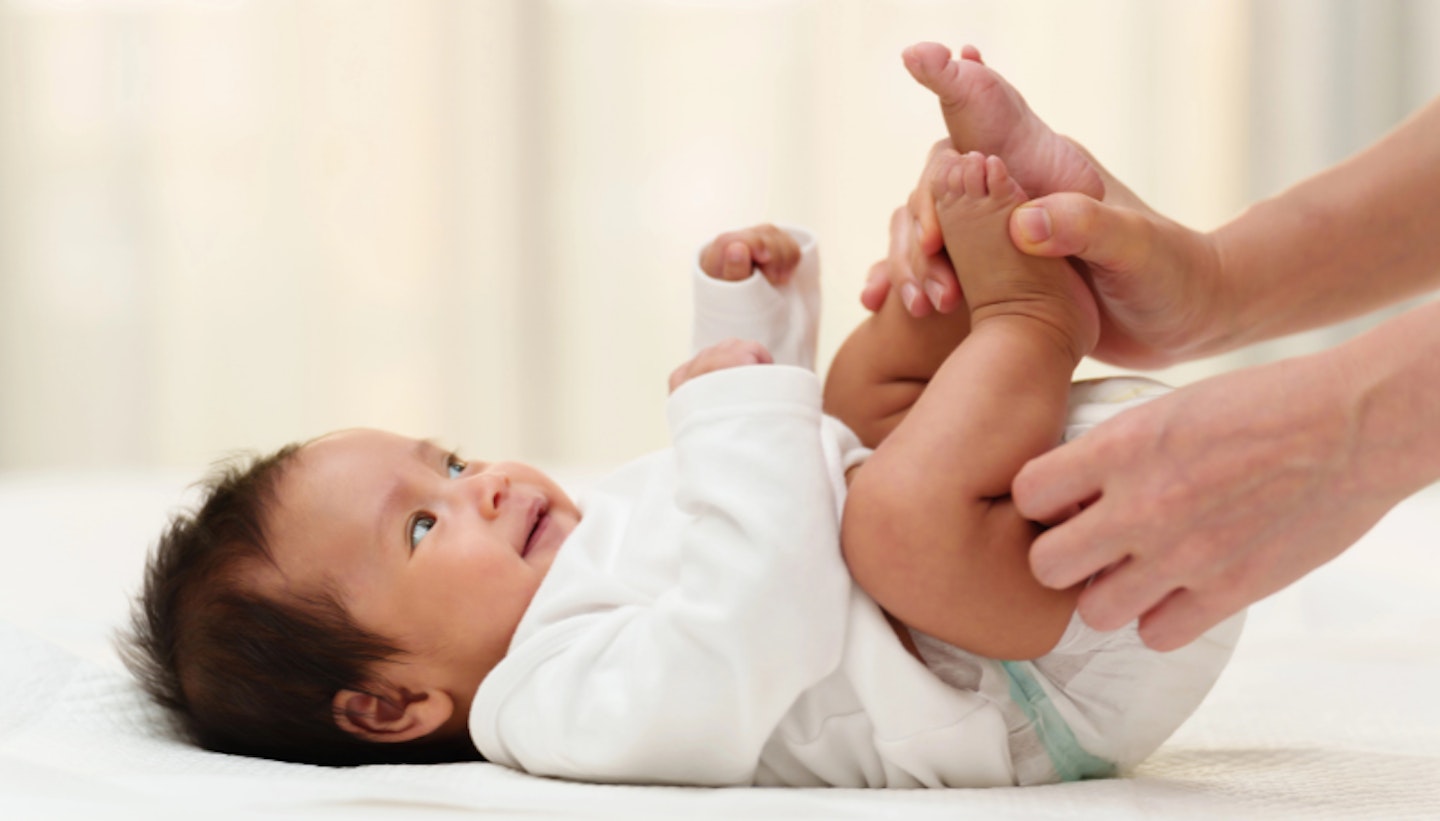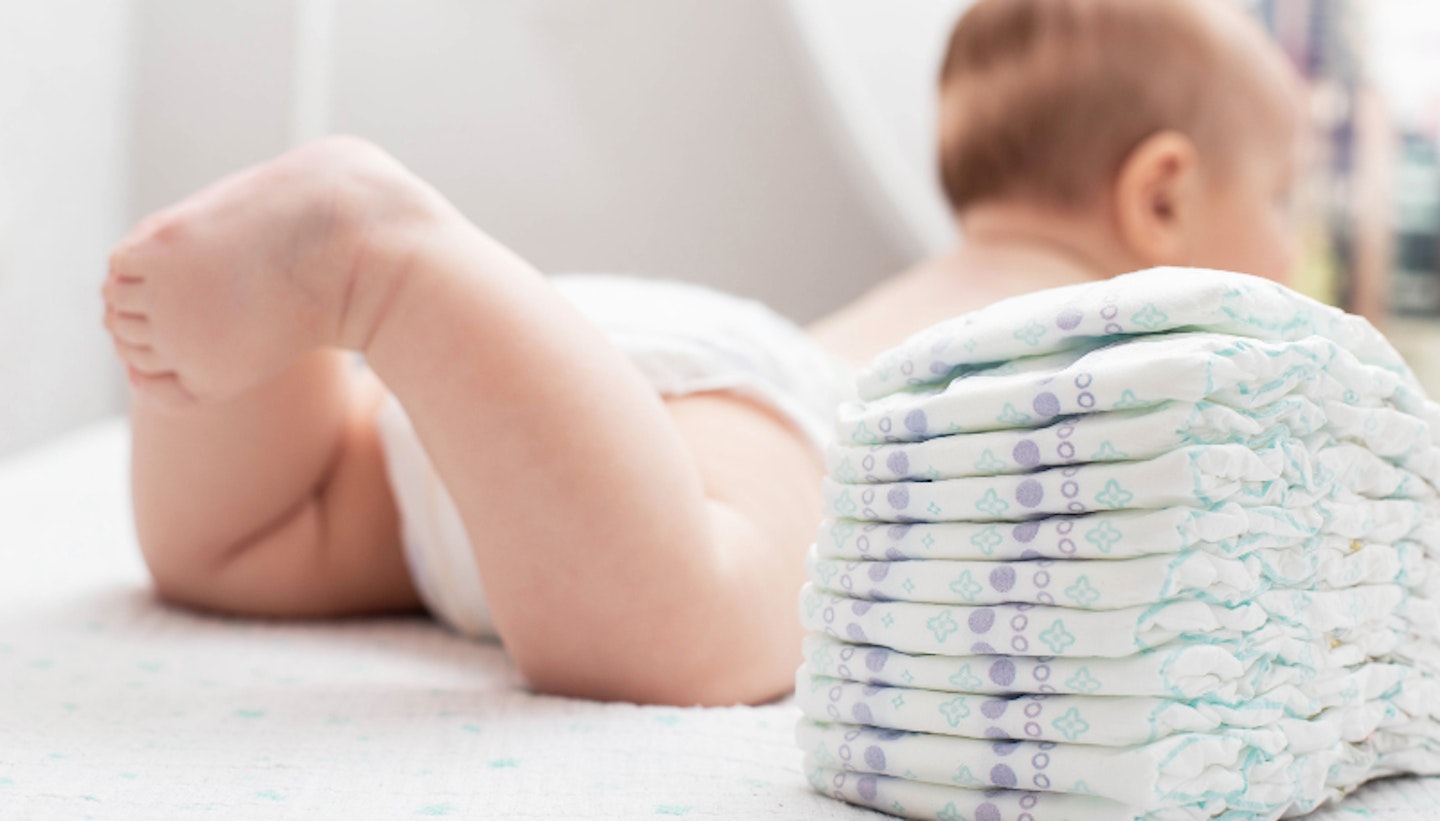Your baby's poo is going to go through a lot of changes in the early days, weeks, and months after they're born. Soft, hard, light, dark, green, black - your baby’s poo will greet you in different colours and sizes and sometimes it'll feel like all you've been doing is changing nappies (and it's not even midday!). A healthy bowel movement is good for your baby and the colour and texture of a their poo can reveal a lot about your baby’s health.
When it comes to your newborn baby's poo, it's hard to recognise what's normal when it comes to the colour, consistency, texture and even smell
According to Dr Yiannis Ioannou, Consultant Paediatrician at The Portland Hospital, part of HCA Healthcare UK, all babies are different, so there is typically no normal. He says: "Age, diet, and health are the main reasons for changes in babies’ stool colour. Newborn babies’ poo is almost black, while older babies tend to have yellow or brown poo.
If you're worried about the colour of the poo, or not sure how often your little one should be pooing, we're here to explain it all.
What does normal baby poo look like?
If you are breastfeeding your baby, a normal, healthy poo will typically be a yellow-green colour and be mushy or creamy in texture. Experts often refer to the shade as Dijon Mustard, and advise that it is perfectly normal to spot seed-like flecks, which are nothing to worry about.
"Breastfed and formula-fed babies frequently produce yellow or mustard-coloured stools, often with a seedy consistency too. Often formula-fed babies have poos which are slightly more solid than the stools of breastfed babies," explains Dr Yiannais.
If you’re feeding your baby formula, a normal, healthy poo will be a peanut butter brown colour and a little firmer than that of breastfed babies.
If you’re swapping between the two, you might also notice formula-fed poos will be more pungent than breastfed poos.
Baby poo colour chart

Dr Yiannis Ioannou says that baby poo can be a number of colours
Black: In newborns younger than one week old, black is a healthy colour and is referred to as meconium. However, if it persists beyond this time, it could indicate a health problem. The colour should gradually change from black to dark green, then yellow.
Yellow: Yellow and mustard is a common and normal colour of poo from breastfed babies.
Brown or orange: This is a normal colour of poo for a formula-fed baby. When a baby drinks formula, their poo tends to be light brown or orange. It may also be slightly darker and solid compared with the poo of a breastfed baby.
What causes green baby poo?
According to the NHS, your baby’s first few nappies will often be a greenish-black colour and tar-like in texture. Despite seeming alarming, this is very normal and is medically referred to as meconium.
Dr Yiannis says that many babies occasionally have green poo, and it is usually nothing to be concerned about. "One of the most common times for a baby to have green poo is once meconium transitions to regular baby stool. As the stool goes from black to yellow, there are often some dark green stools for a day or two."
Unlike your baby’s later poos, this doesn’t contain any breast milk or formula, just the materials they ingested in the uterus, including amniotic fluid, mucus and skin cells. Despite the unusual green colour, these poos won’t smell but will cling to your baby’s skin, so it’s often a good idea to use a thin coat of Vaseline to make nappy changing less challenging.
Between days two to four, you’ll notice their poo getting less sticky and more of an army green colour. Again, this isn’t anything to worry about and just means they've started to digest the breastmilk or formula.
Occasionally your baby's green poo could be caused by something else. This can include:
• Foremilk hindmilk imbalance - your breast milk changes over time starting with low-fat and high-sugar “foremilk" and later high-fat, high-calorie “hindmilk”. Too much foremilk can cause green or frothy poo.
• Illness - if it seems more like diarrhoea, it could be that your tot has a bit of a tummy bug and it's worth checking with your GP.
• Food intolerance - some babies can react to cow's milk if they're on formula milk or to something mum has eaten. If they are suffering from a reaction, you may see that they also develop eczema and are generally irritable after feeding, as well as potentially having green poo.
• Green foods - if mum is eating a lot of leafy greens, this could also get into baby's system and cause green coloured poo.
• Iron supplements - green poo can also be caused by iron supplements, either taken by mum or baby.
• Insufficient milk intake - if you notice they aren't needing to be changed very often and they aren't gaining weight, they may not be getting the milk they need. Check in with your GP or health visitor to check your baby is getting enough milk when feeding.
• Jaundice - treatment for jaundice can sometimes cause green poo.
• Teething babies - an increased swallowing of saliva can sometimes cause green poo.
When to see a doctor

"If your baby’s poo is any other colour than an earthy tone, it is worth seeking medical advice from a GP or paediatrician." Says Dr Yiannis.
Pale baby poo
If you notice your baby’s poo to be a lot paler than it normally would be, talk to your GP or health visitor immediately. Pale white, chalky or grey stools are often a sign of liver disease, so these are not nappies to ignore.
Dr Yiannis adds: "Although uncommon, white, or very pale poo could indicate a serious medical problem, known as biliary atresia. Jaundice in newborns is a common condition, particularly in the first two weeks of life. Anyone who suspects that their baby still has jaundice after 14 days should check the colour of their poo as it could indicate an underlying problem. All babies with jaundice beyond 14 days should be checked by a doctor. If your baby has white or pale stools, you should contact your GP or paediatrician immediately.".
Bright green baby poo
If your baby’s poo becomes bright green and frothy at any point, this is usually a sign that things aren’t quite right and normally means they're not getting enough calorie-laden, high-fat hindmilk. This could be because you’re not feeding for long enough on each breast, so try to start feeding on the breast you ended your last feed on.
Bright green poo can also mean your baby is sensitive to something you’ve taken, such as antibiotics, so it’s a good idea to check with your GP if you have any concerns.
"Green poo can be normal although may also indicate a food allergy, especially if very loose and contains mucus, so it is best to seek medical advice if it lasts for longer than a couple of weeks." says Dr Yiannis
Mucus in baby poo
If your baby’s poo is green with slimy, glistening streaks, this normally means there is mucus in the poo and is quite common in babies that drool a lot. If it fills your baby’s nappy for a couple of days Dr Yiannais warns "the presence of mucus can also signify that your baby is fighting off an infection. If it persists, it’s best to visit your GP or paediatrician."
Blood in my baby's poo
Although not always serious but alarming to see, it’s always a good idea to call your doctor if you notice blood in your baby’s poo as it might be a sign of an allergy or infection.
"If a baby’s poo is a red tone, this could indicate it contains some blood. The baby could have a health problem, or they may have simply swallowed a small amount of blood. They could have swallowed blood if they are breastfed and their mother’s nipples are cracked and bleeding. Alongside this, it could be that the baby’s bottom is bleeding or sore. Babies with milk protein allergy can sometimes have flecks of blood in the poo, so speak with your paediatrician if this is the case." says Dr Yiannis.
If there are specs of black blood, it often means the blood has been digested – if you’ve got sore cracked nipples, this could be why.
Other baby poo concerns
Diarrhoea
Your baby’s normal, healthy poos will often be mushy and creamy. Diarrhoea poos differ, so it’s important to recognise the signs of diarrhoea inyour baby. Diarrhoea poo will be runnier and waterier than normal, look yellow and often explode out of the nappy completely.
While worrying, there can be a completely harmless cause, as Midwife Marley explains: “Introducing solid foods at the weaning stage, changes in milk, common colds, teething, upset stomachs and taking antibiotics can all cause babies to have runny poo and in some cases diarrhoea."
If your baby is younger than three months, or you change more than two or three diarrhoea-filled nappies, it’s a good idea to contact your doctor as this may lead to dehydration. Marley also warns to watch out for nappy rash, "When your baby has diarrhoea it can become trickier to keep on top of cleaning little ones’ bottoms properly, increasing the chance of nappy rash occurring, so use a good barrier cream to help protect baby’s delicate skin from the nasties that can cause nappy rash.”
Constipation
After they reach six weeks old, it’s normal for your baby not to pass a stool for seven to ten days but this can cause constipation.
Breastfed babies rarely get constipated, and it’s normal for babies to strain or even cry when they’re doing a poo, but if your baby seems uncomfortable, it’s worth getting in touch with a health professional for guidance on how to relieve constipation.
How will my baby's poo change when weaning?
When weaning your baby, stools may become more solid in general. It will become more similar to adult poo – thicker, usually darker in colour and smellier too.
Your baby will often become constipated when they are first introduced to solid foods. They may appear uncomfortable and pass a hard, pebble-like stool. This isn’t always something to worry about. You can help relieve your baby's constipation with diluted fruit juice - fruits such as apples, pears and prunes contain sorbitol which acts as a natural laxative. But, if you notice three or more nappies like this, be sure to contact your doctor.
Constipation is best avoided by giving your baby lots of fruit and vegetables, and by drinking plenty of water. A gentle tummy massage can also help to relieve any discomfort.
You're very likely to notice a change in the frequency of bowel movements when weaning in that your baby should poo less often.
Once you start weaning, you'll start seeing unusual colours in your baby’s poo. This is often a sign of undigested food (for example lumps of red can sometimes be beetroot). Be prepared for orange poo after carrots and dark blue after blueberries!
The odd poo with lumps of food in is nothing to worry about, but if you notice this happening more frequently and are worried about your baby’s digestion, it’s worth booking an appointment with your GP.
How often should my baby poo?

This really depends, but on average you can expect to see four poos a day during your baby’s first week. This will often slow down to two a day by the time your baby turns one.
Dr Yiannais says: "Essentially, it doesn't matter how regular your baby is, as long as the poo is soft and they're having no difficulties. Any earth-tone shade of poo, from brown to yellow to green, is usually normal."
If you’re breastfeeding your baby, for the first few weeks, you may see a yellowish stool after every feed. Newborn formula-fed babies can also poo up to five times a day at first, but after a few months, this can drop down to as little as once a day.
Meet the expert
Dr Yiannis Ioannou is a Consultant Paediatrician at Chelsea and Westminster Hospital and at the Portland Hospital and Bupa Cromwell Hospitals. He has diverse paediatric experience gained in hospitals across London and Sydney that spans all paediatric specialities. Yiannis has two children who have provided him with the most valuable of all lessons and experiences as a paediatrician.
Midwife Marley Hall is a registered midwife based in Surrey UK. She has practised midwifery in various settings throughout London and Surrey over the past 10 years covering both the NHS and private sectors, and is an expert in all things antenatal, pregnancy and postnatal care for women. She is a founder of @ChildBirthDownloads and is teaching parents about all aspects of mainly pregnancy stories, from birth plans to c-section scar advice.
Aimee Jakes is the Shopping and Community Editor at Bauer Media where she works on fitness, fashion and beauty content across a number of titles.
The information in this article is also based on expert advice from trusted medical sources including the NHS(National Health Service) and NCT (National Childbirth Trust) websites.
